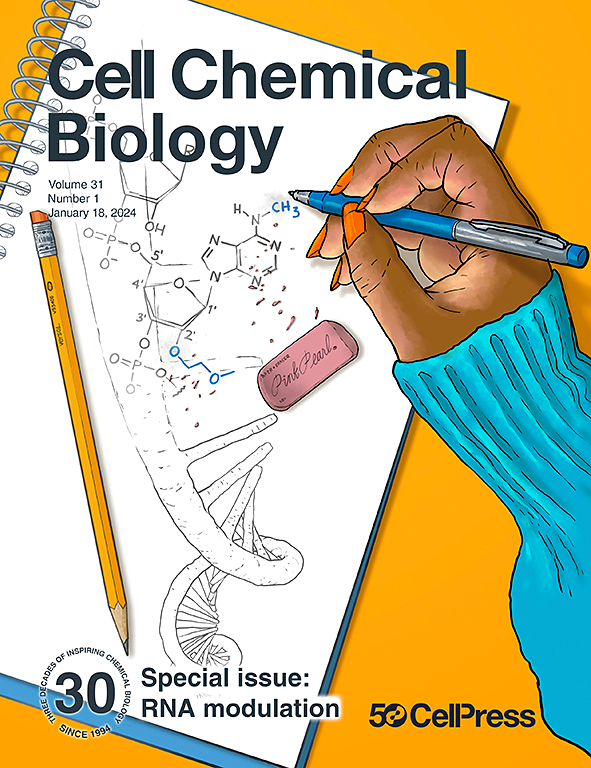Two sides of a co(i)ndensate
IF 7.2
1区 生物学
Q1 BIOCHEMISTRY & MOLECULAR BIOLOGY
引用次数: 0
Abstract
In the June 5th issue of Molecular Cell, Das et al.1 quantified the stability of condensates and fibrils formed from the prion-like low complexity region of hnRNPA1. They demonstrate that condensate interiors function as sinks and suppress fibril growth by slowing protein efflux, illuminating the interplay between condensation and fibril formation.
co(i)的两边紧密相连
Das等人在6月5日的Molecular Cell杂志上量化了hnRNPA1的朊病毒样低复杂度区形成的凝聚物和原纤维的稳定性。他们证明了凝结水内部的功能,通过减缓蛋白质外排来抑制纤维的生长,阐明了凝结水和纤维形成之间的相互作用。
本文章由计算机程序翻译,如有差异,请以英文原文为准。
求助全文
约1分钟内获得全文
求助全文
来源期刊

Cell Chemical Biology
Biochemistry, Genetics and Molecular Biology-Molecular Medicine
CiteScore
14.70
自引率
2.30%
发文量
143
期刊介绍:
Cell Chemical Biology, a Cell Press journal established in 1994 as Chemistry & Biology, focuses on publishing crucial advances in chemical biology research with broad appeal to our diverse community, spanning basic scientists to clinicians. Pioneering investigations at the chemistry-biology interface, the journal fosters collaboration between these disciplines. We encourage submissions providing significant conceptual advancements of broad interest across chemical, biological, clinical, and related fields. Particularly sought are articles utilizing chemical tools to perturb, visualize, and measure biological systems, offering unique insights into molecular mechanisms, disease biology, and therapeutics.
 求助内容:
求助内容: 应助结果提醒方式:
应助结果提醒方式:


